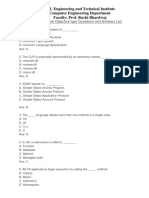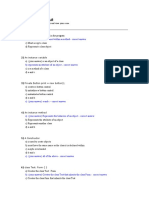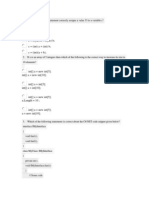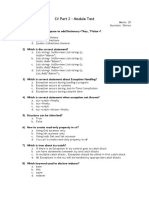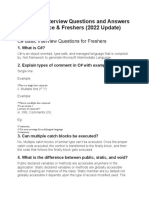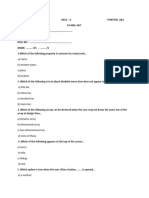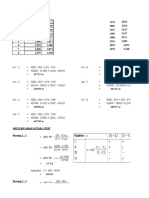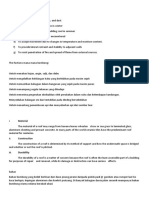0% found this document useful (0 votes)
12 views11 pagesDot Net Questions
The document consists of a series of questions related to C# programming, covering topics such as basic syntax, data types, object-oriented programming concepts, and advanced features. Each question presents multiple-choice answers that test knowledge on C# fundamentals, including variable declaration, control structures, inheritance, and error handling. It serves as a comprehensive quiz for assessing understanding of C# programming principles.
Uploaded by
Hello WorldCopyright
© © All Rights Reserved
We take content rights seriously. If you suspect this is your content, claim it here.
Available Formats
Download as TXT, PDF, TXT or read online on Scribd
0% found this document useful (0 votes)
12 views11 pagesDot Net Questions
The document consists of a series of questions related to C# programming, covering topics such as basic syntax, data types, object-oriented programming concepts, and advanced features. Each question presents multiple-choice answers that test knowledge on C# fundamentals, including variable declaration, control structures, inheritance, and error handling. It serves as a comprehensive quiz for assessing understanding of C# programming principles.
Uploaded by
Hello WorldCopyright
© © All Rights Reserved
We take content rights seriously. If you suspect this is your content, claim it here.
Available Formats
Download as TXT, PDF, TXT or read online on Scribd
/ 11






















